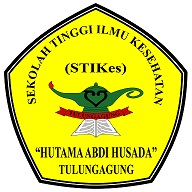Antibacterial activity of combined extracts of red ginger (Zingiber officinale var. Rubrum) and betel leaf (Piper betle L.) against Staphylococcus aureus and Escherichia coli
DOI:
https://doi.org/10.35584/melysa.v2i1.45Keywords:
Red Ginger Betel Leaf Staphylococcus aureus Escherichia coli AntibacterialAbstract
The use of traditional medicine can be an alternative treatment with increasing antibiotic resistance. Red ginger (Zingiber officinale var. Rubrum) and betel leaf (Piper betel L.) are plants that can be used as an antibacterial. This study aimed to determine the antibacterial activity of combined extracts of red ginger and betel leaf. This experiment was carried out by making extracts of red ginger and betel leaf with maceration and tested the antibacterial activity. The antibacterial activity test used the paper disc diffusion method. The study was conducted with five different concentrations of extract 20%, 40%, 60%, 80%, and 100%. The results showed that the combination of red ginger and betel leaf extract at a concentration of 80% had the highest inhibitory area against Staphylococcus aureus (10.6 mm) and Escherichia coli (7.5 mm). The data obtained were statistically tested using One Way Anova with a significance level of > 0.05. The results of One Way ANOVA analysis of the combination of red ginger and betel leaf extracts on Staphylococcus aureus had a significant value of 0.083, while those extracts on Escherichia coli had a significant value of 0.690. It can be concluded that the combination of red ginger and betel leaf extract at a concentration of 80% had a strong inhibitory level against Staphylococcus aureus and a moderate inhibitory level against Escherichia coli.
Downloads
References
Darmadi. Infeksi Nosokomial Problematika Dan Pengendaliannya Jilid I. Jakarta: Salemba Medika; 2008.
Cowan, Marjorie K. Microbiology : A Sistems Approach. third. New York: McGraw-Hill International Edition; 2012. http://repositorio.unan.edu.ni/2986/1/5624.pdf.
Setiabudy. Antimikroba: Dalam Farmakologi Dan Terapi. Edisi 5 (Cetakan Ulang Dengan Perbaikan, 2008). Jakarta: Balai Penerbit FKUI; 2007.
Kim E, Min J, Kim T, et al. [6]-Gingerol, a pungent ingredient of ginger, inhibits angiogenesis in vitro and in vivo. Biochem Biophys Res Commun. 2005;335(2):300-308. doi:10.1016/j.bbrc.2005.07.076
Nursal SW, Juwita WS. Bioaktifitas Ekstrak Jahe (Zingiber officinale Roxb.) dalam Menghambat Pertumbuhan Koloni Bakteri Escherichia coli dan Bacillus subtilis. J Biog. 2006;2(2):64-66. http://jbioua.fmipa.unand.ac.id/index.php/jbioua/article/view/33
Handrianto P. Uji Antibakteri Ekstrak Jahe Merah Zingiber officinale var . Rubrum Terhadap Staphylococcus aureus Dan Escherichia coli. J Res Technol. 2016;2(1):1-4. https://core.ac.uk/download/pdf/228914662.pdf.
Saraswati D. Pengaruh Konsentrasi Ekstrak Daun Sirih Terhadap Daya Hambat Escherichia coli. J Heal Sport. 2011;3(2). https://ejurnal.ung.ac.id/index.php/JHS/article/view/92.
Otieno J, Hosea K, Lyaruu H, Mahunnah R. Multi-Plant Or Single-Plant Extracts, Which Is The Most Effective For Local Healing In Tanzania? African J Tradit Complement Altern Med. 2008;5(2):165-172. doi:10.4314/ajtcam.v5i2.31269
Anonymous. Parameter Standar Umum Ekstrak Tumbuhan Obat, Edisi I. Jakarta: Departemen Kesehatan Republik Indonesia; 2000.
Marliana SD, Suryanti V, Suyono. Skrining Fitokimia dan Analisis Kromatografi Lapis Tipis Komponen Kimia Buah Labu Siam ( Sechium edule Jacq . Swartz .) dalam Ekstrak Etanol. Biofarmasi. 2005;3(1):26-31. https://core.ac.uk/download/pdf/12345756.pdf.
Tiwari P, Kumar B, Kaur M, Kaur G, Kaur H. Phytochemical Screening and Extraction : A Review. Int Pharm Sci. 2011;1(1):98-106. doi:10.1002/hep.29375
Anonymous. Materia Medika Indonesia Jilid I. Jakarta: Departemen Kesehatan Republik Indonesia; 1977.
Setyowati WAE, Ariani SRD, Ashadi, Mulyani B, Rahmawati CP. Skrining Fitokimia dan Identifikasi Komponen Utama Ekstrak Metanol Kulit Durian ( Durio zibethinus Murr .) Varietas Petruk. Semin Nas Kim dan Pendidik Kim VI. 2014:271-280. https://adoc.tips/skrining-fitokimia-dan-identifikasi-komponen-utama-ekstrak-m.html.
Ciulei J. Metodology for Analysis of Vegetables and Drugs. Bucharest: Faculty of Pharmacy; 1984.
Anonymous. Farmakope Indonesia, Edisi IV. Jakarta: Departemen Kesehatan Republik Indonesia; 1995.
Deinstrop EH. Summary for Policymakers. In: Intergovernmental Panel on Climate Change, ed. Climate Change 2013 - The Physical Science Basis. Vol 53. Cambridge: Cambridge University Press; 2007:1-30. doi:10.1017/CBO9781107415324.004
Pelczar MJ, Chan ECS. Dasar-Dasar Mikrobiologi. Jakarta: UI Press; 1988.
Waluyo L. Teknik Dan Metode Dasar Dalam Mikrobiologi. Malang: UMM Press; 2008.
Muadifah A, Astutik TK, Amini HW. Studi aktivitas ekstrak etanol dan sediaan gel daun melinjo ( Gnetum gnemon L ) sebagai antibakteri terhadap Staphylococcus Aureus. Chempublish J. 2019;4(2):89-100. https://online-journal.unja.ac.id/chp/article/view/7631.
Darsana I, Besung I, Mahatami H. Potensi Daun Binahong (Anredera Cordifolia (Tenore) Steenis) dalam Menghambat Pertumbuhan Bakteri Escherichia Coli secara In Vitro. Indones Med Veterinus. 2012;1(3):337-351. https://ojs.unud.ac.id/index.php/imv/article/view/1879.
Campbell NA, Jane BR, Lisa AU, et al. Biologi Jilid 1, Edisi 8. Jakarta: Erlangga; 2010.
Ajizah A. Sensitivitas Salmonella Typhimurium Terhadap Ekstrak Daun Psidium Guajava L . Sensitivitas Salmonella Typhimuriumterhadap Ekstrak Daun Psidiumguajava L. 2004;1:31-38. https://ppjp.ulm.ac.id/journals/index.php/bioscientiae/article/view/130/113.
Cavalieri SJ, Rankin ID, Harbeck RJ, et al. Manual of Antimicrobial Susceptibility Testing. USA: American Society for Microbiology; 2005.
Downloads
Published
Issue
Section
License
Authors retain copyright and grant the journal right of first publication with the work simultaneously licensed under a Creative Commons Attribution-ShareAlike 4.0 International License that allows others to share the work with an acknowledgment of the work's authorship and initial publication in this journal.














